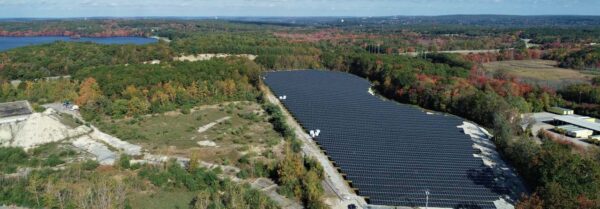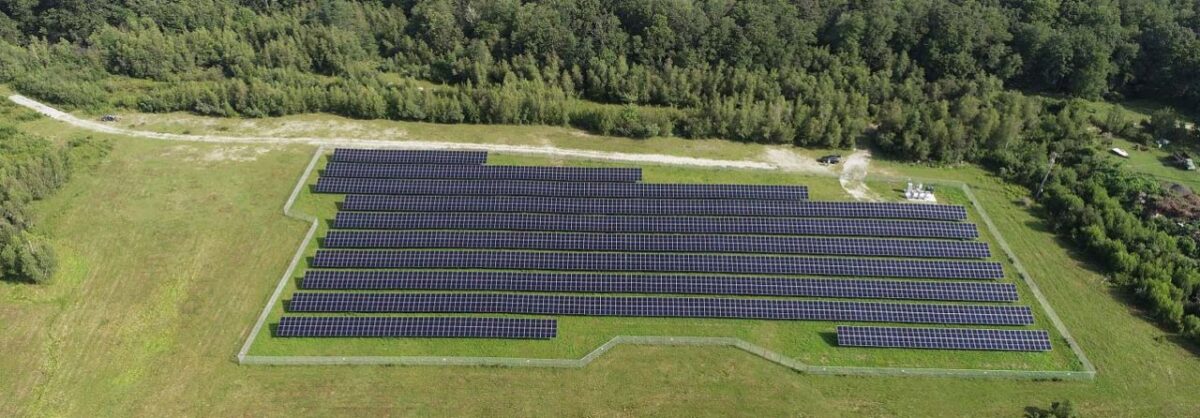CleanCapital, a solar and storage renewables investor, announced it acquired assets located in Rhode Island, marking a new market for the investor. The company acquired a portfolio of 10 projects with 26.2 MW of power capacity.
Projects in the portfolio range from 250 kW to 5.4 MW. All of the projects are operational, with some linked to net metering agreements and others operating under feed-in-tariffs.
Offtakers for the projects include, but are not limited to, municipalities and school districts, the YMCA, and Johnson & Wales University. One of the projects is located on the property of the Women’s Development Corporation (WDCHOC), a low-income housing authority that supports women, the elderly, and people with special needs.
K&L Gates served as buyer’s counsel on the transaction, while the seller was represented by Robinson & Cole LLP and Ballard Spahr LLP.
“On the structuring side, this operating asset portfolio was unique, as some of the assets were still in the ITC recapture period,” said Alyssa Rinaldi, senior director of business development, CleanCapital. “This is not our first acquisition of this type, but it showcases our ability and appetite to transact on in-recapture assets.”

CleanCapital said its acquisition strategy is focused on asset performance and long-term return on investment, while also equally focusing on providing energy access for underserved or low-income communities, converting landfills, brownfields and former superfund sites to solar facilities, and funding emerging markets like Guam and Alaska.
Brownfield and landfill redevelopment and underserved energy community solar projects have come under focus following the passage of the Inflation Reduction Act, which adds a 10% installed system cost tax credit for qualified projects in such locations. LandGate, a leading provider for data solutions and an online marketplace for U.S. commercial land and resources, recently published a guide for profiting from these energy communities using their PowerData tool. Analysis of LandGate data suggests that nearly 40% of the U.S. could qualify for these energy community tax credits, signifying a large opportunity for values-focused investors like CleanCapital.
“With every investment and acquisition, we apply a great deal of rigor, honed from years of assessing clean energy assets’ longevity and ROI, as well as maximizing high-impact federal tax incentives. The Rhode Island portfolio demonstrates our ability to structure an acquisition to meet the seller’s needs; in this case, structuring around the developer taking their tax equity internally,” said Julia Bell, chief commercial officer, CleanCapital.
CleanCapital has typically focused on operational asset acquisition, but expressed intent to also expand into new construction, pre-notice-to-proceed investing, and corporate capital injection. The company expects to continue to seek new business in Rhode Island, a state that targets a 100% renewable energy standard by 2033. The state’s 2021 Act on Climate sets mandatory, enforceable emissions reduction goals and a 2050 target for net-zero emissions.
To date, CleanCapital has invested nearly $1 billion in projects and companies, including the acquisition of BQ Energy, a landfill and brownfield site rehabilitation specialist. The company has acquired and managed more than 200 operating and new construction projects in 27 states, totaling more than 400 MW.
This content is protected by copyright and may not be reused. If you want to cooperate with us and would like to reuse some of our content, please contact: editors@pv-magazine.com.









By submitting this form you agree to pv magazine using your data for the purposes of publishing your comment.
Your personal data will only be disclosed or otherwise transmitted to third parties for the purposes of spam filtering or if this is necessary for technical maintenance of the website. Any other transfer to third parties will not take place unless this is justified on the basis of applicable data protection regulations or if pv magazine is legally obliged to do so.
You may revoke this consent at any time with effect for the future, in which case your personal data will be deleted immediately. Otherwise, your data will be deleted if pv magazine has processed your request or the purpose of data storage is fulfilled.
Further information on data privacy can be found in our Data Protection Policy.